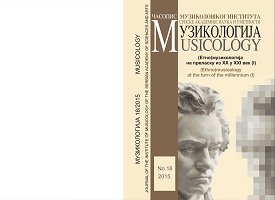The Speech Choir in Central European Theatres and Literary-Musical Works in the First Third of the 20th Century
The Speech Choir in Central European Theatres and Literary-Musical Works in the First Third of the 20th Century
Author(s): Reinhart Meyer-KalkusSubject(s): Music, Sociology of Art, History of Art
Published by: Muzikološki institut SANU
Keywords: Speech Choir; spoken-word-movement; contemporary music; Luigi Nono; Helmut Lachenmann;
Summary/Abstract: Speech choirs emerged as an offshoot of the choral gatherings of a wider youth musical and singing movement in the first half of the 20th century. The occasionally expressed opinion that choral speaking was cultivated primarily by the Hitler Youth and pressed into service on behalf of Nazi nationalist and racist propaganda is, historically, only partially accurate. The primary forces of choral speaking in Germany were, from 1919, the Social Democratic workers’ and cultural movement and the Catholic youth groups, in addition to elementary and secondary schools. The popularity of speech choirs around 1930 was also echoed in the music of the time. Compositions for musical speech choirs were produced by composers like Heinz Thiessen, Arnold Schönberg, Ernst Toch, Carl Orff, Vladimir Vogel, Luigi Nono, Helmut Lachenmann and Wolfgang Rihm. Moving forward from the Schönberg School, the post-1945 new music thereby opens up the spectrum of vocal expressions of sound beyond that of the singing voice. It does so not only for solo voices but for the choir as well.
Journal: Muzikologija
- Issue Year: 1/2015
- Issue No: 18
- Page Range: 159-174
- Page Count: 16
- Language: English

